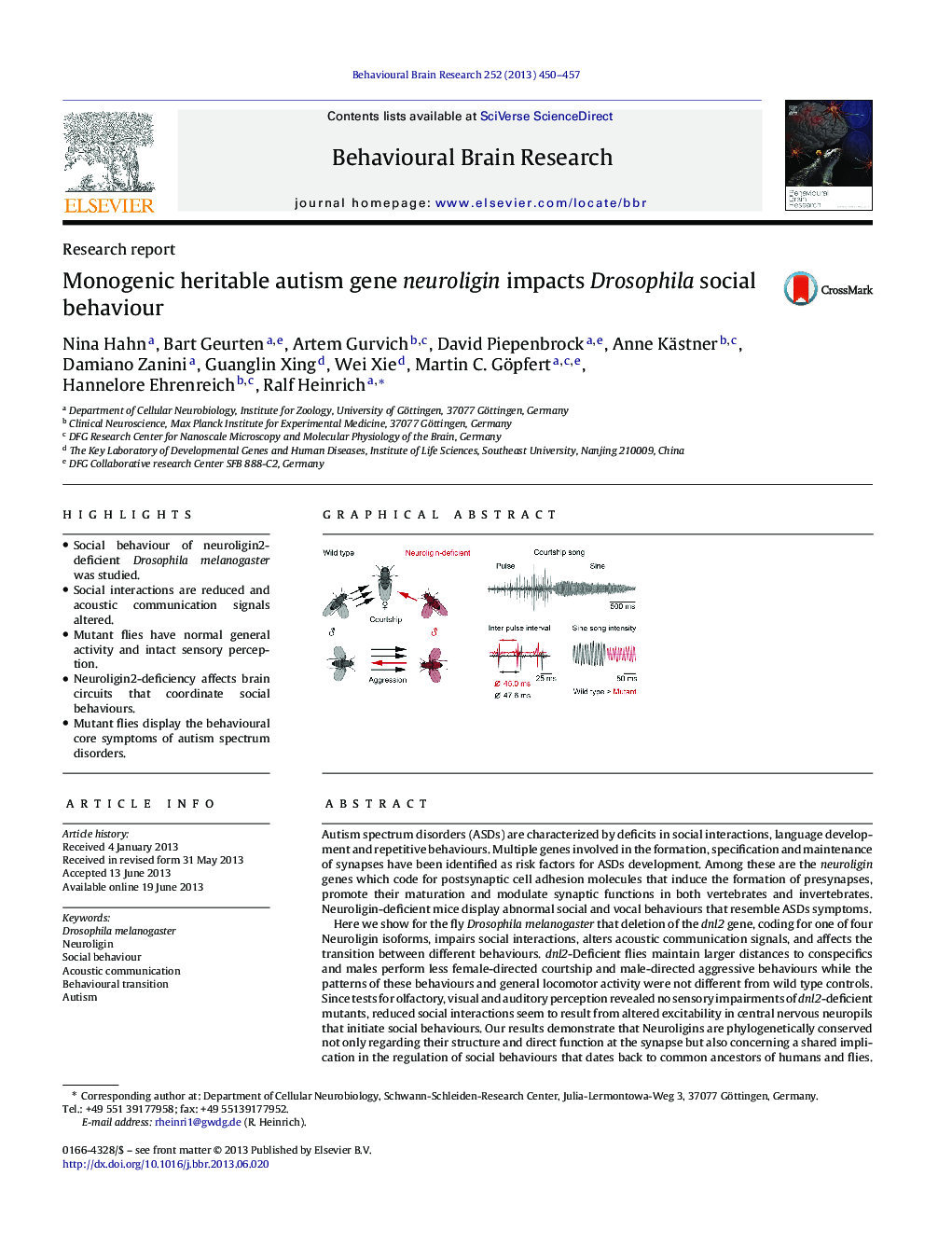| کد مقاله | کد نشریه | سال انتشار | مقاله انگلیسی | نسخه تمام متن |
|---|---|---|---|---|
| 4312636 | 1612980 | 2013 | 8 صفحه PDF | دانلود رایگان |

• Social behaviour of neuroligin2-deficient Drosophila melanogaster was studied.
• Social interactions are reduced and acoustic communication signals altered.
• Mutant flies have normal general activity and intact sensory perception.
• Neuroligin2-deficiency affects brain circuits that coordinate social behaviours.
• Mutant flies display the behavioural core symptoms of autism spectrum disorders.
Autism spectrum disorders (ASDs) are characterized by deficits in social interactions, language development and repetitive behaviours. Multiple genes involved in the formation, specification and maintenance of synapses have been identified as risk factors for ASDs development. Among these are the neuroligin genes which code for postsynaptic cell adhesion molecules that induce the formation of presynapses, promote their maturation and modulate synaptic functions in both vertebrates and invertebrates. Neuroligin-deficient mice display abnormal social and vocal behaviours that resemble ASDs symptoms.Here we show for the fly Drosophila melanogaster that deletion of the dnl2 gene, coding for one of four Neuroligin isoforms, impairs social interactions, alters acoustic communication signals, and affects the transition between different behaviours. dnl2-Deficient flies maintain larger distances to conspecifics and males perform less female-directed courtship and male-directed aggressive behaviours while the patterns of these behaviours and general locomotor activity were not different from wild type controls. Since tests for olfactory, visual and auditory perception revealed no sensory impairments of dnl2-deficient mutants, reduced social interactions seem to result from altered excitability in central nervous neuropils that initiate social behaviours. Our results demonstrate that Neuroligins are phylogenetically conserved not only regarding their structure and direct function at the synapse but also concerning a shared implication in the regulation of social behaviours that dates back to common ancestors of humans and flies. In addition to previously described mouse models, Drosophila can thus be used to study the contribution of Neuroligins to synaptic function, social interactions and their implication in ASDs.
Figure optionsDownload high-quality image (207 K)Download as PowerPoint slide
Journal: Behavioural Brain Research - Volume 252, 1 September 2013, Pages 450–457